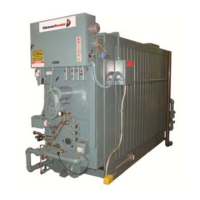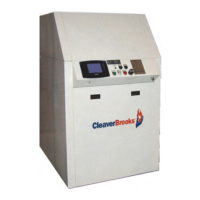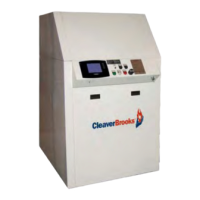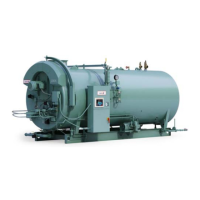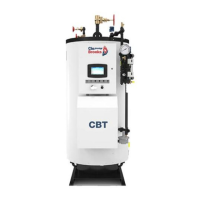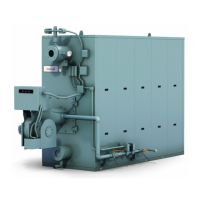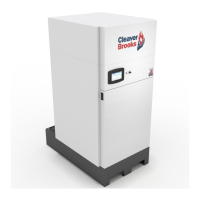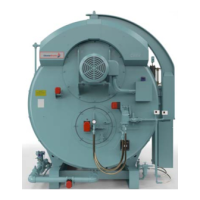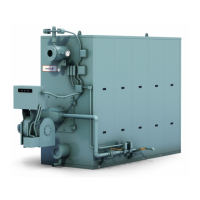Waterside Care and Requirements
3-2
750-211 (revised 2009)
Promethean Boilers, Model 4WI Manual
3.2 — Water Requirements
3.2.1 — Hot Water Boilers
3.2.1.1 — Air Removal
The hot water outlet includes a dip tube which extends 2 to 3 inches into the boiler. Oxygen or air released in the
boiler will collect or be trapped at the top of the boiler shell. The dip tube reduces the possibility of air, which may
be trapped at the top of the shell, from entering into the system.
FIGURE 3-1. Dip Tube
The air vent tapping on the top center line of the boiler should be piped into the expansion or compression tank.
Air trapped at the top of the boiler will find its way out of the boiler through the tapping.
3.2.1.2 — Minimum Water Temperature
The minimum recommended boiler water temperature is 170º F. When water temperatures lower than 170º F are
used, the combustion gases are reduced in temperature to a point where water vapor condenses, which can cause
corrosion in the boiler and stack.
Condensation is more severe on a unit that operates intermittently and which is greatly oversized for the actual
load. Condensation can be minimized by maintaining boiler water temperatures above 170º F.
A temperature of 170º F is also recommended in order to provide a sufficient “temperature head” when No. 6 fuel
oil is to be heated to the proper atomizing temperature by the boiler water in a safety-type oil preheater. (The elec-
tric preheater on the boiler must provide additional heat to the oil if boiler water temperature is not maintained
above 200º F.)
3.2.1.3 — Rapid Replacement of Boiler Water
The system layout and controls should be arranged to prevent the possibility of pumping large quantities of cold
water into a hot boiler, which will cause shock or thermal stresses. Water temperature in a boiler of 200° F or 240°
F cannot be completely replaced with 80° F water in a few minutes time without causing thermal stress. The same
fact applies to periods of normal operation, as well as during initial startup.
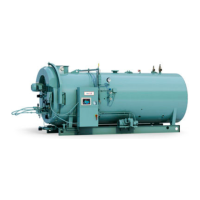
